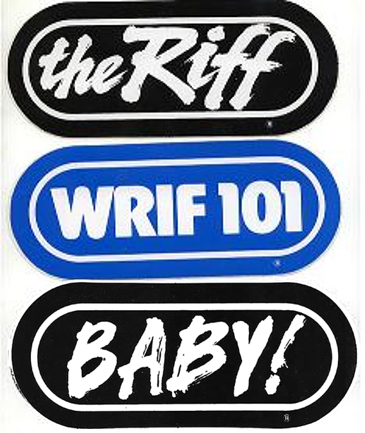
Today, I’ve got both a true story and a cautionary tale to share with you.
One of the most popular series on HBO/Max is The White Lotus, going strong in its third season. If you’ve not seen it, there’s no need for me to summarize it for you. The big takeaway is that this show has been a winner for HBO, capturing much buzz on both social media and broadcast television.
Short videos featuring the cast members have been all over TikTok, Instagram, Facebook, and other outlets. Thanks to the fine cast and some great writing, many catch phrases and big moments on the show have translated wonderfully to viral memes.
And in terms of sheer ratings impact, season 3’s final episode, which dropped this past Sunday night drew an audience of 1.6 million viewers. It led the streaming Top 10 in all seven weeks of its run. This is truly amazing viewership for a streaming show on a subscription service this many watched in real time.
So good for HBO/Max.
But bad for Duke University.
That’s right. While the success of the series has been a home run for HBO/Max, as well as showrunner/writer Mike White, the powers-that-be at Duke are more than a little miffed.
The reason is that one of the show’s key characters, Timothy Ratliff, sports a Duke T-shirt in several scenes across the various episodes. Depicted as the dad of a wealthy, respectable South Carolina family, we watch Ratliff’s career come apart at the seams as he and his family are trying to enjoy an exotic Thailand vacation. It turns out he’s facing a financial scandal that might cost him his job, his savings, and might ultimately land him in jail.
As the plot develops, Ratliff hides this bad news from his posh wife and his three young adult kids. Meantime, the pressure from his mounting legal problems back home and trying to conceal what’s going on from his family leads Ratliff down the trail of abusing alcohol and his wife’s supply of Lorazepam, an anti-anxiety drug.
wife and his three young adult kids. Meantime, the pressure from his mounting legal problems back home and trying to conceal what’s going on from his family leads Ratliff down the trail of abusing alcohol and his wife’s supply of Lorazepam, an anti-anxiety drug.
Through much of the season, we watch Ratliff endure the swirl of failure and self-medication right before our very eyes, seriously contemplating—and visualizing—his suicide while vividly killing other family members in his drug-addled imagination.
And often while wearing that Duke T-shirt.
And finally the august 187 year-old university had enough. As Scott Caacciola wrote in a New York Times blog late last month, it wants nothing to do with this show.
He quotes Duke’s VP for Communication, Marketing and Public Affairs, Frank Tramble who drew a line signifying the university’s limits with The White Lotus‘ creative plotting:
“Duke appreciates artistic expression and creative storytelling, but characters’ prominently wearing apparel bearing Duke’s federally registered trademarks creates confusion and mistakenly suggests an endorsement or affiliation where none exists (and that the show) not only uses our brand without permission, but in our view uses it on imagery that is troubling, does not reflect our values or who we are, and simply goes too far.”
After a meme of Ratliff shooting himself—while wearing a Duke T-shirt—appeared all over social media, the university responded:
White Lotus just blessed us w an all-time meme if Duke loses early in the tournament (and for any brutal Duke loss thereafter) pic.twitter.com/pIsYiiozYL
— glansberg (@bigpizzaguy) March 17, 2025
And yet Duke has not pulled its extensive line of merch (some of it from LuluLemon BTW) from its online store. In fact, they invite you to buy as much as you can afford, just like every college, university, and yes, radio station does:

Not only is Duke’s outrage promoting the HBO show, but it will likely sell even more merch.
When you put your logo for sale in the mass market, anybody can buy and wear your stuff—including celebrities but also people who you just might not want displaying your colors. Don’t cry for Duke. They have sold untold millions (billions?) of dollars of branded merch over the decades. This exposure on White Lotus is a small price to pay for these massive profits.
If you’re in radio, you likely have a story about a station’s merch showing up precisely where you’d never want to see it—on someone arrested for a crime, for example. I’m sure some of you will describe your most embarrassing merch moment in the “comments” section below or on my socials.
Because I have a story that will top yours. I promise.
It’s 1981 and I’ve just taken over the helm at then ABC-owned WRIF in Detroit. And the station is being soundly defeated by the upstart WLLZ (Wheels) owned by Doubleday.
I knew I needed to shake thinks up at WRIF, and had an edgy idea for how to make it happen. The station had already been using its familiar oval shape on bumper stickers that went beyond displaying call letters and frequency.
We learned in research that we owned the shape, allowing us to insert popular bands, catch phrases like BABY!, and pretty much anything else in the center—even without the call letters.

Every week thousands of listeners sent us self-addressed-stamped envelopes to get one of our stickers. We had teams of interns assigned to bumper sticker duty to handle the demand.
At that time, the phrase “KICKASS” was making the rounds on rock radio, an exuberant expression of enthusiasm about the music. Our afternoon guy, Arthur Penhallow began to use it as an ID: “The Home of Kickass Rock ‘n Roll.”
And I decided it was time for us to commemorate the phrase with a “KICKASS” sticker. I got the greenlight from my GM, and very reluctantly from our corporate president in New York (who warned me, “I hope you know what you’re doing”).
warned me, “I hope you know what you’re doing”).
In collaboration with sales management—who told me they had my back—we put it on the air with regularity, offering the sticker at the same time. I began to plan a billboard campaign, hoping to find a local outdoor company that would accept our creative.
And then the inevitable stuff hit the fan. There were advertiser complaints—especially from one of the big agencies. Long story short, the sales department folded like the proverbial cheap tent. Soon after, the campaign quietly came to a close, and we stopped promoting the stickers on the air.
Of course, we had purchased boxes and boxes of these stickers. And as I found out later, they started quietly disappearing from the station’s supply room. The outside company who produced and sold our merch (and probably made more money than all of us) was more than happy to take those “KICKASS” stickers off our hands. Because they were banned, they became even more popular.
I moved on. You win some and you lose some. And I had a job to do to beat WLLZ (which we accomplished two books later).
But that’s not the end of the story.
The following year, I got the word a small group of neo-Nazis was using our “KICKASS” stickers to adorn their black plastic shields. While there was no more than 10 of these guys, they would occasionally show up on a local TV newscast because after all, who doesn’t want to cover a good neo-Nazi story on the 6 o’clock news?
No big deal. I just looked the other way when these guys showed up in town sporting our merch.
Until one day I got a call from the editor of the Metro Times, the free local paper that was well-read by Detroit’s young adult community. They had just toted up the results of their annual photo contest, and he was giving me a courtesy call to alert me to the year’s big winner….
….yup, a nice group shot of our hometown neo-Nazi sporting our stickers, loud and proud.
My heart sank. Believe me, I felt much worse than those Blue Devil administrators who saw their shirts on a suicidal businessman in a fictional television series.
The Metro Times graciously gave me the opportunity to write a short response, rebuttal, or explanation of the intended meaning of our “KICKASS” campaign. I have no idea whether anyone even bothered to read it. A lot more people saw the neo-Nazi goons brandishing our stickers on their uniforms.
Lesson learned. You may want to get your logo on as many bodies and heads as you can. But be careful what you wish for.
As the brain trust at Duke learned—the hard way—you never know who’s going to buy it.
Or wear it.
P.S. I spent too much time searching on Google and then deep diving on the Metro Times archives site, but they apparently don’t go back that far in time. But I know somewhere that someone has that “prize photo.” If you find it, I’m confident you’ll post it.
P.P.S. You can still buy a WRIF “KICKASS!” sticker online. I easily ran into a bunch like this eBay seller, snowmonster125:

Maybe I should have hung onto a case of those stickers.
P.P.P.S. Apologies to Cadillac Jack.
P.P.P.P.S. If you’re thinking White Lotus creator, Mike White, must have gone to the University of North Carolina, you’d be incorrect. He’s a graduate of Wesleyan University in Connecticut.
Originally published by Jacobs Media









